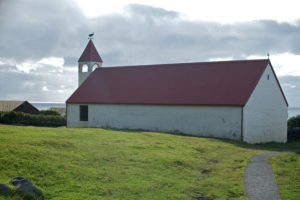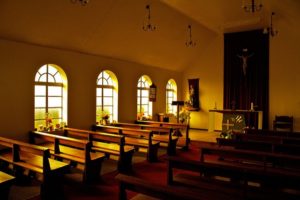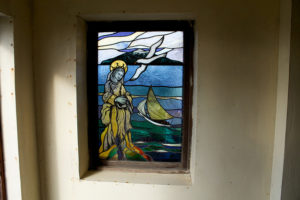The world’s most remote Roman Catholic parish, located on Tristan da Cunha, has no priest and only 42 members but it appears to be thriving anyway. At least that is one of the conclusions in an article published on November 6 on the website of the prominent American Catholic news analysis and opinion magazine, America.

After carefully describing the remote location of Tristan and some basic facts of the island’s history, the author, Dominic Lynch, writes that Catholicism was founded among the Tristan Islanders in 1908 by Agnes Smith, an Irish lady who settled there with her husband. She and her sister Elizabeth were the first two members of the church community, which has endured for over a century as a minority group in a total island population, today, of 246.
Despite the small population of Catholics, the church maintains a building, St. Joseph’s Church, near the center of the Settlement, the only village on the island. Lynch describes the building as “nondescript,” though unmistakably a church. Inside it features a stained-glass window depicting Mary, Star of the Sea.
James Glass, the Chief Islander and the administrator of St. Joseph’s, told the author that the number of Catholics on the island has varied over the years as they have married Anglicans and the couples have chosen memberships in one or the other church community. Mr. Glass said that St. Joseph’s was built in 1987 which prompted some Anglicans when they married Catholics to convert. “The Catholic population is actually increasing,” he said.

St. Joseph’s does not have a permanent, resident priest but the church is able to get around the problem effectively. The Rev. Hugh Allan of the Norbertine Order was appointed in 2016 as the ecclesiastical superior for Tristan and the other British Atlantic islands of St. Helena and Ascension. Abbott Hugh leaves his base in the U.K. once a year to visit Tristan and care for the needs of his parishioners there.
His visits to Tristan usually last from several weeks to several months. While he is on the island, he celebrates sacraments that the islanders cannot celebrate in the absence of a priest. “My task, then, is to support the islanders in trying to live the Gospel,” he told the author.
But he makes it possible for the church community to thrive during the rest of the year when he is gone. Abbott Hugh consecrates enough hosts before he leaves to last the Tristan Catholics until he comes again. During his final mass he consecrates around 4,000 hosts which the church members preserve in vacuum sealed plastic containers that they put into a large ciborium. They are then brought out and used at the weekly services.

Thus, even while the priest is away, the Tristan Catholics have their weekly communion services and masses. The eucharistic ministers can also perform weddings, baptisms, and funerals. Mr. Glass adds that they must wait for the priest to arrive to hear confessions and to celebrate confirmations.
According to Anne Green, a member of the congregation, “it is always a special time when the priests come.” She said it is important for them to support the people in their faith. She added that before the present church was built, it used to be much more difficult to practice their Catholic beliefs. Priests would visit but much more sporadically.
Abbott Hugh, speaking about the remoteness of Tristan, expressed his opinion that modern communication technology can help the islanders overcome some of the problems—though in some ways the isolation can be beneficial. “It is always a great privilege to visit the island communities and to spend time with the good people who live there. I have encountered so much kindness and goodness,” he concluded.
This article in America supplements a piece published in 2018 by Abbott Hugh Allan which covered some of the same ground about the Catholic Church on Tristan.